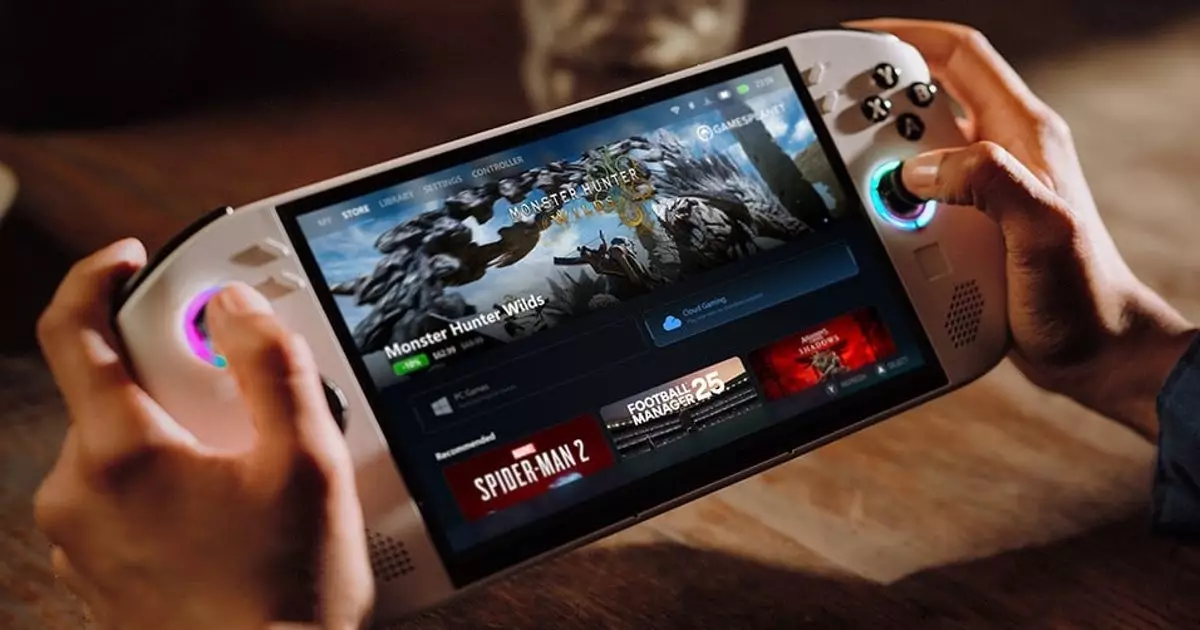For avid gamers, especially those navigating the dynamic landscape of handheld gaming, the arrival of the Steam Deck was a revelation. It opened a door to portable gaming that many hadn’t fathomed just a few years prior, particularly with its compatibility features. Now, Valve plans to extend this compatibility assurance by introducing a new classification system for games that work seamlessly across SteamOS. With the impending launch of alternative SteamOS handhelds like the Lenovo Legion Go S, the stakes are higher than ever. The potential for a broader community of handheld gamers solidifies Valve’s commitment to making SteamOS a predominant player in portable gaming.
Understanding the Verification Process
The Steam Deck Verified program has become a core aspect of the gaming experience for its users. For many, there’s a ritualistic thrill that accompanies checking a game’s store page, anxiously looking for that reassuring green tick indicating full compatibility. This visual cue can feel like divine intervention in the often-turbulent world of gaming compatibility. Valve intends to build upon this by providing a richer narrative surrounding game compatibility with SteamOS as a whole, producing tiered classifications such as SteamOS Compatible or SteamOS Unsupported.
The testing regimen that Valve employs is crucial to this transition. Though the team is unlikely to test every title on each SteamOS-capable device, reliance on aggregated data from existing Steam Deck games will guide their categorization efforts. This creates an ecosystem where developers are encouraged to ensure that their titles support a broader range of hardware setups, thus promoting the growth of SteamOS-friendly games.
The Impact of Expanding Compatibility
With upwards of 18,000 titles expected to receive a “SteamOS Compatible” label right out of the gate, it underscores the breadth of support that Valve is banking on. This move is not just beneficial for users but is also strategic for game developers. As the landscape diversifies and more handheld devices adopt SteamOS, developers will have a clear incentive to optimize their games for this operating system. The potential for a larger audience could serve as a catalyst for innovation and encourage developers to consider alternative architectures, thus benefitting the entire ecosystem.
However, while expanding compatibility seems like a home run, the new rating system may not fully encapsulate game performance metrics. With cross-platform releases being the norm, knowing whether a game runs without crashing is a crucial first step, but gamers also desire insight into framerate stability and input responsiveness—parameters that the ratings may overlook. This appears to create a gap, potentially leaving players in the dark about titles that might physically run but perform suboptimally on certain devices.
SteamOS vs. Windows: A Comparative Overview
The ongoing comparison between SteamOS and Windows 11 remains a hot topic in portable gaming. Current sentiments lean toward optimizing for SteamOS as a more efficient and user-friendly operating system. With claims of SteamOS presenting a lightweight and stable experience compared to the heavier Windows counterpart, it’s an enticing proposition for gamers. Additionally, the ability to run non-Steam games has emerged as another feather in SteamOS’s cap, allowing users the freedom to explore various gaming avenues without being tethered to a singular platform.
However, while SteamOS is hailed as versatile and functional, the reality for users who prefer exclusive access to franchises like Apex Legends, which has removed Linux support, highlights the inherent risks involved with relying on open-source systems. It raises questions about sustaining support across titles and maintaining intensive gaming experiences without the exhaustive compatibility assurances offered by other ecosystems.
Anticipating New Innovations
The anticipation surrounding the next batch of SteamOS-compatible handhelds, such as the Lenovo Legion Go S, brings with it excitement for the possibilities that lie ahead. The infrastructure Valve is developing ensures that consumers will not just hear about innovative devices but will also have a reliable framework indicating performance expectations for each. Yet, skepticism remains that further manufacturers may still initially prioritize Windows environments over SteamOS due to existing partnerships and market dominance.
Despite concerns and mixed impressions regarding upcoming devices like the Asus ROG Ally 2, hope persists that SteamOS as an operating system will carve out an undeniable niche in the portable market. The marketplace is set for an invigorating transformation, and as Valve grows the ecosystem around SteamOS compatibility, gamers are sure to benefit from a broader range of options tailored to their preferences. The landscape may be shifting, but the focus remains clear: creating an inclusive environment where handheld gaming flourishes across multiple platforms.

